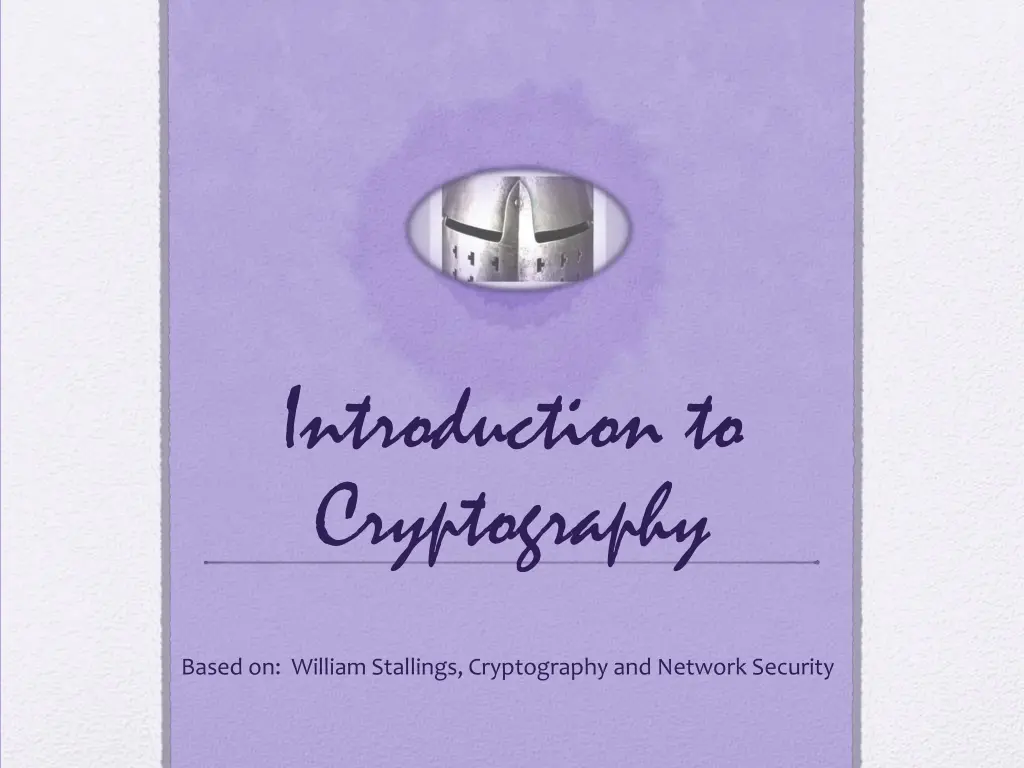
Understanding Cryptography: Prime Numbers, Theorems, and Algorithms
Dive into the core concepts of cryptography with a focus on prime numbers, theorems like Fermat's and Euler's, and algorithms such as the Miller-Rabin algorithm. Explore the significance of number theory in securing digital communications.
Download Presentation

Please find below an Image/Link to download the presentation.
The content on the website is provided AS IS for your information and personal use only. It may not be sold, licensed, or shared on other websites without obtaining consent from the author. If you encounter any issues during the download, it is possible that the publisher has removed the file from their server.
You are allowed to download the files provided on this website for personal or commercial use, subject to the condition that they are used lawfully. All files are the property of their respective owners.
The content on the website is provided AS IS for your information and personal use only. It may not be sold, licensed, or shared on other websites without obtaining consent from the author.
E N D
Presentation Transcript
Introduction to Cryptography Based on: William Stallings, Cryptography and Network Security
Chapter 8 More Number Theory
Prime Numbers Prime numbers only have divisors of 1 and itself They cannot be written as a product of other numbers Prime numbers are central to number theory Any integer a > 1 can be factored in a unique way as a = p1a1* p2a2* . . . * pp1a1 where p1< p2< . . . < ptare prime numbers and where each aiis a positive integer This is known as the fundamental theorem of arithmetic
Table 8.1 Primes Under 2000
Fermat's Theorem States the following: If p is prime and a is a positive integer not divisible by p then ap-1 = 1 (mod p) Sometimes referred to as Fermat s Little Theorem An alternate form is: If p is prime and a is a positive integer then ap = a (mod p) Plays an important role in public-key cryptography
Euler's Theorem States that for every a and n that are relatively prime: a (n) = 1 (mod n) An alternative form is: a (n)+1 = a (mod n) Plays an important role in public-key cryptography
Miller-Rabin Algorithm Typically used to test a large number for primality Let ? be an odd prime, and ? 1 = 2??, where ? is odd. Let ? be any integer such that gcd ?,? = 1. Then either ?? 1 (??? ?), or ?2?? 1 ??? ? , for some ?, 0 ? ? 1. This motivates the following algorithm.
Miller-Rabin Algorithm Algorithm: TEST: input ? 3 ; output prime or composite Write ? 1 = 2??, ? odd. For ? = 1 to ? do the following: 1. Choose a random integer ?, 1 < ? < ? 1, and compute ? = ????? ? 2. if? 1, ? ? 1then do: 3. ? 1; while? ? 1 and? ? 1 do 4. compute ? ?2??? ?; if? = 1thenreturn composite ; ? ? + 1; if? ? 1 thenreturn composite ; 5. return ( prime") ; 6.
Deterministic Primality Algorithm Prior to 2002 there was no known method of efficiently proving the primality of very large numbers All of the algorithms in use produced a probabilistic result In 2002 Agrawal, Kayal, and Saxena developed an algorithm that efficiently determines whether a given large number is prime Known as the AKS algorithm Does not appear to be as efficient as the Miller-Rabin algorithm
Chinese Remainder Theorem (CRT) Believed to have been discovered by the Chinese mathematician Sun-Tsu in around 100 A.D. One of the most useful results of number theory Says it is possible to reconstruct integers in a certain range from their residues modulo a set of pairwise relatively prime moduli Can be stated in several ways Provides a way to manipulate (potentially very large) numbers mod M in terms of tuples of smaller numbers This can be useful when M is 150 digits or more However, it is necessary to know beforehand the factorization of M
